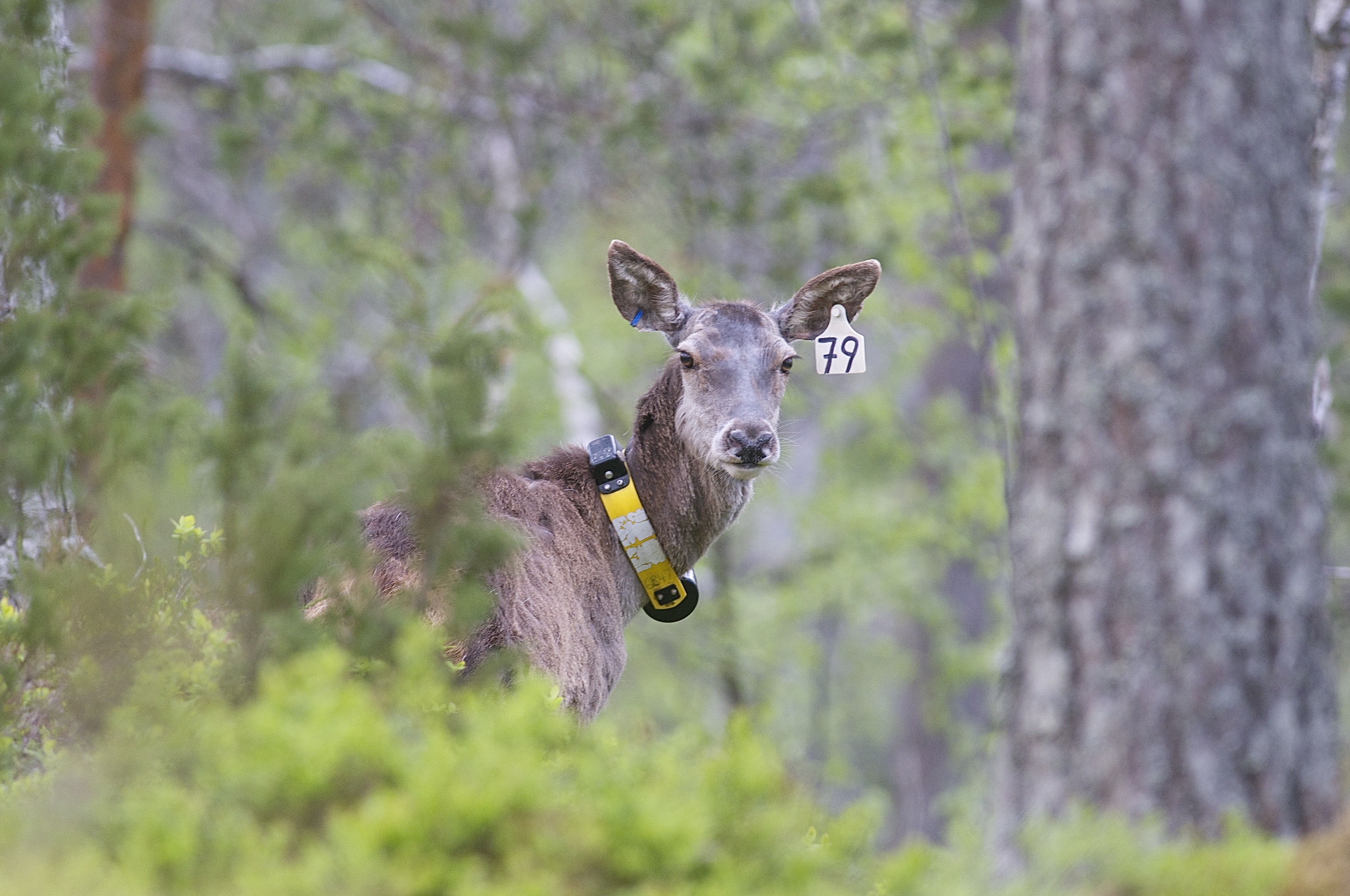Alumni Spotlight: Atle Mysterud

To the contrary, scientists worldwide have published depressing research on the consequences of climate change on our planet since the biologists’ stay at CAS. We asked Mysterud, a Professor at the Centre for Ecological and Evolutionary Synthesis (CEES) at the University of Oslo, about the prospects for large mammals.
When they were gathered at CAS, Mysterud and Swenson studied indirect and direct effects of climate on large mammals. They did this by looking at how climate change affects food distribution, such as bears’ access to berries. They also looked at the harvesting process, such as what hunters target, hunter effort, and management via quota-setting.

Jon Swenson is an expert on bears, and studied how a changing climate affects them. For instance, when snow melts earlier in the winter, it can shorten the hibernation period. This again affects access to food.
Mysterud, for his part, spends most his time studying roe deer, red deer, moose and reindeer.
What can you say about the climate effects on harvested large mammals?
The impact of climate on large mammals can be complicated and occurs via different routes. We often envision the direct impact when we see an animal moving in deep snow. This is energetically costly and it is difficult to get access to food.
Other effects are indirect and less apparent to the human eye. For large herbivores, plant quality is very important for energy intake, determining body growth and reproduction. Young, growing plants have superior quality. We therefore see that deer grow fatter after winters with much snow in mountainous areas, since deep snow leads to a delayed and more variable timing of snow melt and hence onset of plant growth.
Climate can also change the dynamics of predator-prey interactions, making prey more or less vulnerable to predation. Human harvesting changes the way animals respond to climate. We see, for example, that the timing of fall migration in red deer was triggered by the onset of the hunting season, more so than the first snowfall.
In your project description, you wrote:
“We envision a fruitful and long-term cooperation that will result in an in-depth understanding of the effects of climate variation on life history and behaviour that will allow us to predict population responses of large mammals generally to ongoing climate change and human harvesting.”
How did it go?
We had a workshop on migration of large herbivores during the spring 2016 at CAS, where we initiated collaboration with North American colleagues with similar GPS data on animal movements to what we have. We were then able to compare data from more than 60 populations of four species of cervids from the two continents to assess general and specific climate-based drivers of migration timing relative to patterns of plant maturation (measured from satellites). This May, we are launching a Global Migration Initiative inviting researchers from across the globe to meet in Wyoming. This is a direct consequence of what was started during CAS, so we were able to initiate long-term work that never would have been possible without this grant.
Since your time at CAS, the UN has published alarming reports on the consequences of climate change on our planet. What are the prospects for the large mammals?
Prospects for large mammals are very variable across the globe. So far, habitat loss and fragmentation have been far more important than climate change. In developing countries, the situation is rather sad, with increasing habitat loss and poverty also causing massive poaching of some species. In western societies, many large mammals are returning due to more favourable human management. A good example is large carnivores, such as wolves and bears, returning to large parts of their former territory in Europe and North America. So the picture is diverse, but large mammals will clearly be affected by climate change in the longer term.
What do you remember best from your year at CAS?
Well, of course I remember the visitors and workshops well. These were exciting events. However, I will also recall the quiet atmosphere in the mornings, when you could really make progress on research - over a good cup of coffee. That is perhaps what I miss the most, the time to work without interruptions. The lunches together with the CAS admin and the other research groups are also enjoyable memories.
How has your career developed since your stay at CAS?
I continue to work on migration and climate effects. However, the main focus of my research has shifted since CAS – it is now wildlife disease dynamics. This change came abruptly due to the emergence of Chronic Wasting Disease (CWD) among wild reindeer in spring 2016 in the Nordfjella region. This was a very unexpected discovery, yielding considerable attention worldwide, and has been a major game changer in my field. This disease emergence led to some very dramatic changes in the management of cervids in Norway, most prominently with the eradication of the entire infected population of over 2000 reindeer in Nordfjella. However, a regulation was also implemented to stop supplementary winter feeding of cervids across Norway, and population reduction of red deer and moose in the Nordfjella region is ongoing. So the battle against CWD is not over and will affect management in years to come. Measuring the impact of all these management changes on cervid populations, using the actions as a form of quasi-experimental approach, is a key focus of my current research.
What advice do you have for future CAS project leaders?
Enjoy it! It is likely to be the best time of your scientific life. The freedom to collaborate with the very best you choose for a full year, with the excellent support of CAS, is a unique opportunity.